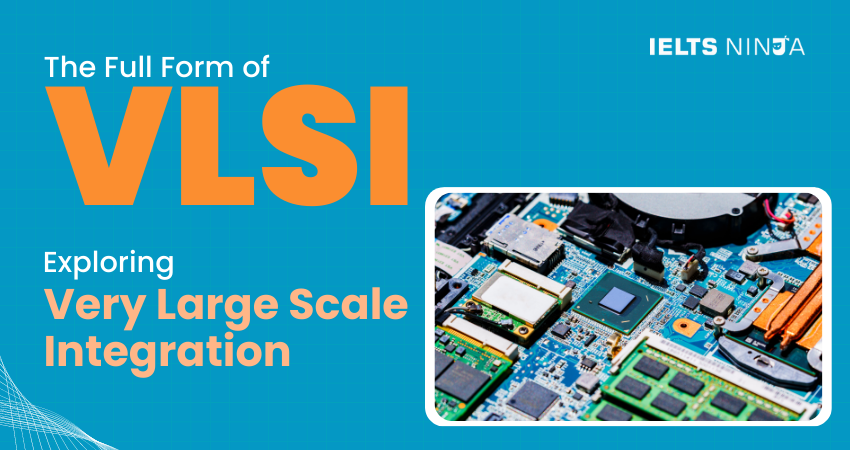In the ever-evolving world of technology, abbreviations are common, often encapsulating complex concepts within a few letters. One such abbreviation that holds immense significance in the realm of electronics and chip design is “VLSI.” VLSI stands for “Very Large Scale Integration,” and it’s a foundational concept in modern electronics. In this article, we will dive into the full form of VLSI, understand its significance, and explore its details in the world of microelectronics.
What Does VLSI Stand For?
VLSI stands for “Very Large Scale Integration”. At its core, VLSI refers to the process of integrating a large number of transistors and other electronic components onto a single semiconductor chip. This integration allows for the creation of complex and powerful electronic circuits within a minimal physical space.
Understanding VLSI Technology
VLSI technology is a fundamental pillar in the semiconductor industry, enabling the creation of microchips that power a wide range of electronic devices, from smartphones to computers, from medical equipment to automotive systems. The essence of VLSI lies in its ability to pack an incredible number of components onto a single chip, resulting in increased functionality, performance, and efficiency.
Key Concepts and Aspects of VLSI
Transistors and Components:
At the heart of VLSI technology are transistors, which act as the building blocks of electronic circuits. These tiny switches control the flow of electrical current within a chip. Through VLSI, an enormous number of transistors, along with other components like resistors and capacitors, are integrated to create intricate circuits.
Integration Levels:
VLSI technology is categorized based on the level of integration achieved on a chip. There are several levels, ranging from SSI (Small Scale Integration) to ULSI (Ultra Large Scale Integration). VLSI falls within the spectrum, allowing for the integration of thousands to millions of transistors onto a single chip.
Advantages of VLSI:
The primary advantage of VLSI lies in its ability to create complex and feature-rich electronic devices while minimizing the physical space they occupy. This leads to smaller and more energy-efficient devices that can perform advanced tasks.
Design and Fabrication:
VLSI design involves creating the layout of electronic components on a chip. This process requires a deep understanding of circuitry, physics, and mathematics. Once the design is complete, the chip goes through a complex fabrication process involving lithography, etching, and layering.
Also Read: Best online IELTS coaching & training academy
Applications of VLSI
VLSI technology has transformed nearly every aspect of modern life by powering an array of electronic devices and systems. Some notable applications include:
- Consumer Electronics: VLSI chips are the backbone of smartphones, tablets, digital cameras, and gaming consoles. These devices leverage VLSI to provide high performance, energy efficiency, and advanced functionalities.
- Computing: VLSI technology enables the creation of powerful microprocessors that form the heart of computers and servers. These processors can execute complex tasks at lightning speed.
- Healthcare: Medical devices like MRI machines, pacemakers, and digital thermometers rely on VLSI technology for accurate diagnostics, monitoring, and treatment.
- Automotive: Modern vehicles incorporate VLSI chips for various functionalities, including engine control, safety systems, infotainment, and autonomous driving.
- Communication: VLSI plays a crucial role in telecommunications, enabling high-speed data transfer, wireless communication, and networking.
Future Trends and Innovations in VLSI
As technology advances, the field of VLSI continues to push boundaries. The trend towards miniaturization, improved energy efficiency, and higher performance remains at the forefront. Emerging technologies such as quantum computing and neuromorphic computing are also exploring new frontiers within VLSI.
Conclusion
In conclusion, VLSI or Very Large Scale Integration, is a cornerstone of modern electronics and chip design. Through the integration of a vast number of transistors and components onto a single chip, VLSI enables the creation of advanced and compact electronic devices. From consumer electronics to healthcare, automotive, and beyond, VLSI technology powers a multitude of applications that shape the way we live and interact with technology.
As you encounter the term “VLSI” in discussions about electronics and technology, remember that it signifies an intricate process that underpins the creation of devices we use daily. The full form “Very Large Scale Integration” represents a remarkable journey of innovation, engineering, and progress that continues to reshape the technological landscape.








